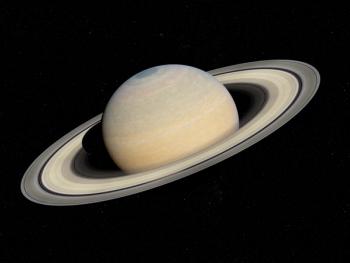
New Spectroscopic Insights into Dwarf Planets: Uncovering Ices and Organics on Sedna, Gonggong, and Quaoar
Recent James Webb Space Telescope (JWST) observations have revealed intricate details about the surface compositions of dwarf planets Sedna, Gonggong, and Quaoar. Using spectroscopy, researchers have detected a rich variety of ices and organic compounds, shedding light on the effects of size and orbit on these distant solar system bodies.
A team of scientists, led by J.P. Emery and colleagues from institutions including Northern Arizona University, NASA, and Université Paris-Saclay, used the James Webb Space Telescope’s (JWST) NIRSpec instrument to explore the icy surfaces of three dwarf planets: Sedna, Gonggong, and Quaoar. These observations, published in Icarus, provide unprecedented insights into the surface compositions of these distant bodies, focusing on the presence of various ices and organic molecules. With orbits that differ significantly, these planets present an ideal opportunity to examine how orbit and size influence surface evolution.
Spectroscopic Findings
The JWST captured spectra across a wavelength range of visible to infrared spectra from 0.7 to 5.2 micrometers (μm) for all three bodies. The data revealed distinct absorption features for each planet, unveiling the presence of various ices and organics. For Quaoar, additional observations in the 0.97 to 3.16 μm range were obtained using a higher spectral resolution (1).
Read More:
Sedna
Sedna’s spectrum showed abundant absorption features indicating the presence of ethane (C2H6), acetylene (C2H2), ethylene (C2H4), and water ice (H2O), alongside potential traces of carbon dioxide (CO2). These hydrocarbons, coupled with broad absorption between 2.7 and 3.6 μm, suggest the presence of complex organic molecules, likely produced by the irradiation of methane (CH4) on Sedna's surface. With its extremely elongated orbit, Sedna’s methane reservoir is better preserved than on the other two dwarf planets, allowing ample time for methane to break down and form more complex hydrocarbons (1).
Gonggong
Gonggong’s spectrum revealed weaker ethane signatures than Sedna but displayed prominent H2O and CO2 features, suggesting complex surface chemistry. The CO2, likely bound to other molecules, indicates that Gonggong’s surface has undergone different irradiation processes than Sedna’s. Ethane and methane were still present at lower concentrations, potentially due to Gonggong’s less extreme orbit, which provides less stability for methane on the surface (1).
Quaoar
Quaoar, the smallest of the three, displayed fewer ethane features and the cleanest water ice signatures. A feature at 3.2 μm suggests the presence of hydrogen cyanide (HCN), although this identification remains tentative. Quaoar’s higher-resolution spectrum also showed subtle overtone and combination bands of both methane and ethane, providing clues about the irradiation processes occurring on its surface. Unlike Sedna and Gonggong, Quaoar’s nearly circular orbit may facilitate a steady loss of methane, leaving less time for irradiation products to accumulate (1).
Complex Organic Molecules and Irradiation Effects
The rich suite of hydrocarbons detected—particularly in Sedna and Gonggong—points to long-term irradiation of methane by energetic particles. This irradiation breaks methane down into lighter hydrocarbons like ethane, acetylene, and ethylene, which can further react to form complex organic molecules. The strength of these features across all three planets supports the theory that methane is replenished on their surfaces, likely from internal geochemical sources (1).
Implications for Solar System Evolution
The study suggests that Sedna, Gonggong, and Quaoar underwent internal melting and differentiation similar to larger dwarf planets such as Pluto and Eris. Their surfaces, enriched with hydrocarbons and ices, provide key insights into how size and orbit shape the evolution of solar system bodies. The complex interplay between methane retention, irradiation, and surface chemistry points to a common mechanism governing these dwarf planets' evolution. However, the variations in their spectra, particularly the stronger ethane signatures on Sedna, may be explained by the different irradiation environments experienced due to their orbits (1).
Conclusion
The JWST’s detailed spectroscopic data have unveiled critical differences in the surface compositions of Sedna, Gonggong, and Quaoar. The presence of various ices and complex organics highlights the importance of methane irradiation in shaping the surfaces of these dwarf planets. As more data is analyzed, researchers expect to refine their understanding of the processes that drive the development of Kuiper Belt objects, offering new perspectives on the dynamic history of the outer solar system and other exoplanets (1,2).
References
(1) Emery, J. P.; Wong, I.; Brunetto, R.; Cook, J. C.; Pinilla-Alonso, N.; Stansberry, J. A.; Holler, B. J.; et al. A tale of 3 dwarf planets: Ices and organics on Sedna, Gonggong, and Quaoar from JWST spectroscopy. Icarus 2024, 414, 116017. DOI:
(2) Carter, A. L.; May, E. M.; Espinoza, N.; et al. A Benchmark JWST Near-Infrared Spectrum for the Exoplanet WASP-39 b. Nat Astron 2024, 8, 1008–1019. DOI:
Newsletter
Get essential updates on the latest spectroscopy technologies, regulatory standards, and best practices—subscribe today to Spectroscopy.





